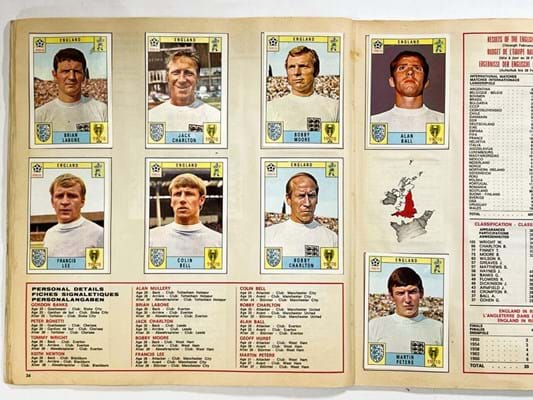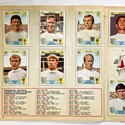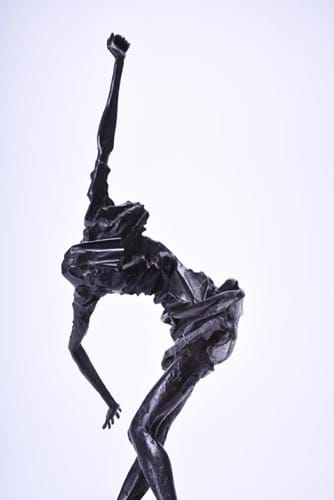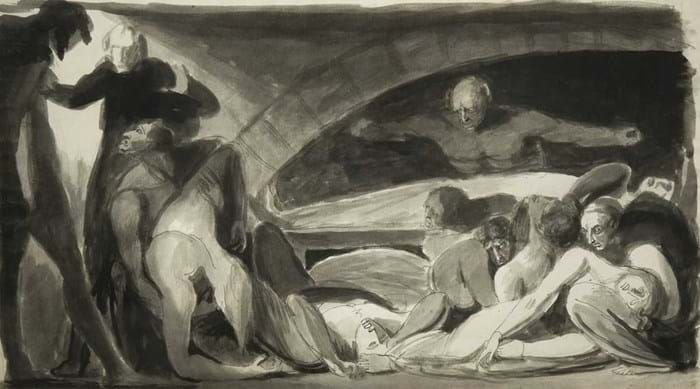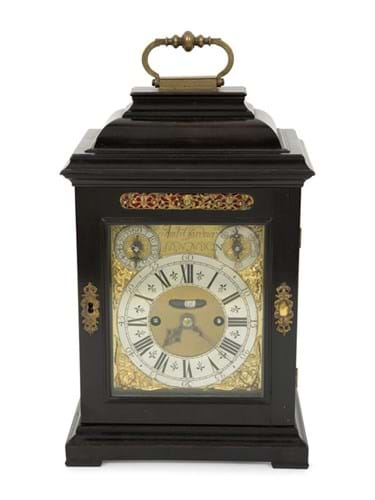
Quarter repeating ebony veneered English table clock signed for Ambrose Gardner, $55,000 (£43,700) at Hindman in Palm Beach.
1. English table clock – $55,000
Very few English Golden Age clocks signed by Ambrose Gardner are recorded. However, his name is well-known as he worked for many years as an apprentice in the household of the ‘father of English clockmaking’ Thomas Tompion.
A member of the Goldsmiths’ Company, who was perhaps hired for his skills as an engraver, Gardner was the foreman at Tompion’s workshop on Water Lane off Fleet Street. Elements of Tompion clocks stamped with the initials AG are thought to have been his work.
The only two clocks fully signed for Gardner have appeared for sale in the past decade. Both are high-status ebony veneered table clocks with ‘quarter repeating’ movements dated to around 1700. They include many ‘Tompion’ features to both the cases and movements and may have been made under his supervision.
Whether or not Gardner branched out on his own around the turn of the 18th century is a matter of speculation.
The example offered by Bonhams in London in 2015 was signed to the backplate only. Although now missing its repeat work, the deluxe complication that meant the clock would once have chimed the hours and quarters on the pull of a cord, it sold at £20,000.
The similar clock that appeared for sale at Hindman in Palm Beach, Florida on December 7 was in better condition with the repeating mechanism still intact. It was fully signed for Ambrose Gardner to both the dial (above the numeral XII) and to the back plate and came for sale from the local estate of Joanna Hoffman whose father John Hoffman had been a member of the British Antique Dealers’ Association.
The best of several clocks from this source in the sale, it sold well above its estimate of $15,000-$25,000 at $55,000 (£43,700).
2. 1970 World Cup Panini album – £2000
The 1970 World Cup was the breakthrough year for Panini. Previously the firm, founded by two brothers in Modena in 1961, was producing stickers for the Italian league. But for Mexico 1970 they secured the rights to publish its first FIFA World Cup trading cards and sell them outside of Italy for the first time.
The craze for collecting and trading football stickers that became the norm in playgrounds in the 1970s and 80s was born.
The cards from the original 1970 World Cup issue are not easy to find in any quantity and in good condition. The near complete album offered by Gildings in Market Harborough on December 5 came for sale from a vendor who had received it as a 12th birthday present from his aunt. She had worked for Thorpe and Porter, Panini’s Leicestershire-based distributor and had given her nephew the complete set. The only two cards now missing were the Jules Rimet Trophy and the Moroccan Football Federation badge.
Offered with an estimate of £1200-1500, it took £2000 from a UK-based collector. Last year Stacey’s in Rayleigh, Essex sold an outstanding complete copy for £2800.
3. Women of Belfast sculpture – £37,000
A bronze from Frederick Edward McWilliam’s (1909-92) Women of Belfast series of sculptures sold for £37,000 at Halls’ in Shrewsbury on December 6. Halls had three bidders from Ireland, Italy and Wales battling on the phone with the bidder from Wales as the successful buyer.
Measuring 2ft (61cm) high, the bronze sculpture was one of a number of figurines by the artist that represent female bomb victims during The Troubles in Northern Ireland, each showing the victim in a different pose.
Born in Bainbridge, County Down, McWilliam (1909-92) was heavily influenced by childhood memories of violent clashes that occurred in his hometown, including seeing his own father treating a young child who had been shot in crossfire.
The Women of Belfast series was created in response to the Abercorn Restaurant bombing in 1972 where two women were killed and many more injured.
The sculpture at Halls has been consigned by a Midlands art collector with an estimate of £25,000-30,000.
4. George Romney sketch – £42,000
The Fine Sale held at Cheffins on December 6-7 was led by an 18th century pen and ink wash on paper by George Romney (1734-1802). The title of this work, John Howard Visiting a Prison, gives a clue as to its 21st century appeal.
The drawing is one of a series by Romney on the subject of John Howard (1726-90), a social reformer who carried out inspections of prisons and lazarettos (plague hospitals) throughout Britain and Europe from 1773. Howard had personally experienced captivity in 1756 when on board a ship taken by a French privateer where all the passengers and crew had been imprisoned in dreadful conditions.
Campaigning for the humane treatment of prison inmates, in 1777 he published his first report The State of Prisons in England and Wales. Romney was inspired by Howard's work and planned to paint two or three large pictures of prison scenes. The finished works never materialised and instead Romney captured the subject in a series of studies and sketches depicting figures in dungeon-like prisons.
Most are unresolved pencil sketches that can sell for around £1000-2000 but this ink and wash was a more finished work. It has been suggested that the crouching figure at the back of the 21 x 12in (52 x 29cm) scene bears some resemblance to Romney himself.
According to a label to the reverse it was formerly in the collection of the South African businessman and art-collector Alfred de Pass (1861-1952) and was later sold though the London dealership Agnew's as part of an exhibition of French and English Drawings in 1966.
Prices for Romney portraits have fallen significantly since then but an image such as this that oozes social history is much more attuned to today’s collecting taste.
Estimated at £4000-6000, it hammered for £42,000.
5. Portraits of George III and Queen Charlotte – £62,000

Allan Ramsay’s pair of half-length profile portraits of George III and Queen Charlotte sold for £62,000 at Lyon & Turnbull.
The precise and sensitive portraiture of Allan Ramsay (1713-84) earned him widespread acclaim, aided by his prodigious intellect and social flair. Samuel Johnson reflected that there was no man ‘in whose conversation there is more instruction, more information, and more elegance, than in Ramsay’s’.
Ramsay had befriended a young Prince of Wales in 1757 with a portrait deemed so life-like and accurate, that a life-long association developed. Upon George’s 1761 Coronation he engaged Ramsay’s services as ‘One of his Majesty’s Painters in Ordinary’
This pair of 3ft x 2ft 1in (91 x 64cm) pendant portraits were commissioned in around 1761 for use in designing coinage for the British Empire. Only three versions are known.
George is presented in dignified regal splendor wearing the star and ribbon of the Garter, his hand placed inside his gold-embroidered jacket.
Queen Charlotte is equally refined in scarlet, draped in lace and pearls. Newly arrived from Germany, she rests her arm on the second volume of David Hume’s 1757 History of Britain, assuring her subjects of her preparedness for the British crown.
Among the earlier, more traditional pictures included in Lyon & Turnbull’s Scottish art sale of December 7, the pair sold some distance above hopes at £62,000 (estimate £25,000-35,000).



